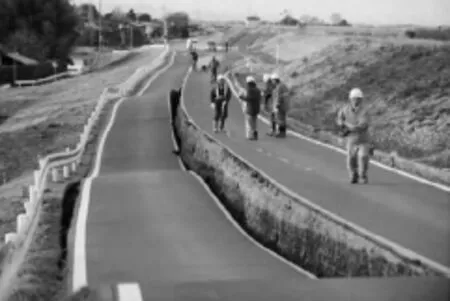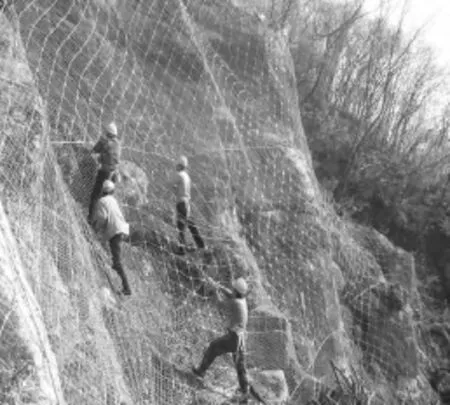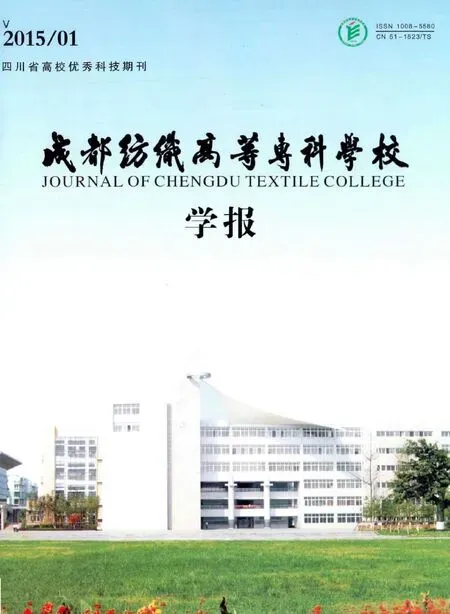Countermeasures of Damages Caused by Earthquakes to Traffic Facilities in Mountainous of West China
2015-07-03LiYanmeiWangWenqiWangZeXiongZhenZhouXiaowen
Li Yan-mei Wang Wen-qi Wang Ze Xiong Zhen Zhou Xiao-wen
(1.Department of Mine,Metallurgy and Geology Engineering,University of Guanajuato,Guanajuato,Gto,36020,Mexico;2.School of Architectural and Civil Engineering,Xihua University,Chengdu,Sichuan 610039,P.R.China;3.School of Civil Engineering,Southwest Jiaotong University,Chengdu,Sichuan 610039,P.R.China;4.school of Xihua,Xihua University,Chengdu,Sichuan 610039,P.R.China;5.urban and rural construction bureau of Dujiangyan City,Chengdu,Sichuan province,611830,P.R.China)
0 Introduction
On May 12,2008 Ms8.0 Wenchuan,Sichuan,China an earthquake(hereinafter referred to as Wenchuan Earthquake)occurred within the Longmenshan active fault zone[1].Due to the earthquake that taking place at the west China,there are considerable influences and destruction of transport facilities,and the case is more serious when it comes to mountainous areas at that part..
1 Directly damage to traffic facilities caused by the earthquake
For direct damage problem of the traffic facilities caused by the earthquake,some specific measures can be taken to avoid similar problems in the next earthquakes.
1.1 Aseismatic construction for roadbed and pavement
With our survey to earthquake damage of national highway 213 from the embankment worksite of Dujiangyan to Yingxiu section,there is no roadbed of the worksite that has reached the destruction degree,among which the use of earthwork reinforcing embankment shows superiority of seismic performance.This result reminds us,if the terrain conditions allow doing so,it is the most reasonable and safest design of embankment when the routes cross through the earthquake zone.
Because the embankment engineering cost is low and is easy to repair,it should be preferred as the main engineering type when the roads pass through active fault zone lines.
The whole digging roadbed cross-section pattern is preferred rather than half filling and half digging[2].The resistance facilities should have enough retaining ability and the drainage measures should be highly considered to reduce the risks of the seismic secondary disasters that cause damage to the road infrastructures.
Additional attention should be paid to the roadbed fill materials.The gravel soils,clayey soil,pebble soil,and material likerocks are good choices,and the material of cohesive strength such as rubbles,continuous graded gravel and hard soil are even better[2].
Pavement structure in the earthquake areas should use the flexible pavement structure as long as possible.On March 11th,2011,an Ms9.0 earthquake hit Japan,despite the large relative displacement in the reserve of aseismatic joint on both sides of the roadbed.However,the adoption of flexible pavement,road surface kept well and surprisingly didn't even crack,which is shown in Fig.2.

Fig.1 The adoption of flexible pavement
There was a certain ability to open to traffic.This kind of practice is worth our reference.
1.2 Aseismatic construction for bridge
It can reduce the seismic damages to the bridge that reforms by methods of strengthening bridge construction,control technologies and seismic reinforcement of bridge when making seismic design for bridges.
The bridges should be located far away from the main fault zone of the earthquake in order to avoid serious regional geological disaster such as land slip and stony mud avalanche[2].
Site selection should be given first priority for bridge building,and be sure to stay away from the steep slope where rock impact is large.
As for bridge in the mountain areas,attention should be paid to increase stirrup reinforcement ratio,distribute as the reinforced,increase ductility of bridges,at the same time require more for the strength of the aggregate,shape,etc[2].
At the same time it is a necessary to use hollow reinforced concrete bridge piers as much as possible to enhance anti-seismic ability.
1.3 Aseismatic construction for tunnel
The first thing is to point out the tunnel engineering.Set the tunnel axis perpendicular with contour line to reduce the appearance of surrounding rock bias problem.
The right structure should be chosen to weaken earthquake damage.It is appropriate to increase the reinforcement for tunnel structure,and enhance the ductility.It is better to use round cross-section pattern,regardless of surrounding rock grade,be sure to use the inverted arch[2],which is shown in Fig.2.

Fig.2 The inverted archo of tunnel
As far as form selection is concerned,enter into the tunnel early or extend with the open tunnel,which is used to effectively avoid land slip blocking of the tunnel portal in Wenchuan Earthquake,which is shown in Fig.3.

Fig.3 The tunnel portal in Wenchuan
It is appropriate to increase the reinforcement for tunnel structure,and enhance the ductility.
2 The damage caused by the secondary disaster
Prevention measure for seismic secondary disasters in mountainous areas is mainly the line selection.Keep away from the high and steep slope,and it is wise to take the form of tunnel.Consequently,to a very large extent,geological hazards,such as collapse,land slip and mud avalanche can be avoided[2].
2.1 To reduce the damages caused by collapse
For the existing traffic facilities threatened by the dangerous rocks,tunnel protection can be applied as rock popping groove,rock popping restraining net,which is shown in Fig.4.

Fig.4 Rock popping restraining net
With the good construction conditions,when the influence and harm of the collapse disaster is large,open tunnel can play a better controlling effect[2].
It is easy to transport the collapse rocks on embankment,so it suggests that long bridge should not be built in collapse risk areas,it is better to choose the embankment or tunnel form.
2.2 To reduce the damage caused by land slip
Conventionalland slide treatmentincludes brush waterproofing and drainage engineering,load shedding protection and anti-sliding piles.
For large land slip and risky point,avoidance scheme should be taken.During the use of line selection in reconstruction,the plan of half road and half bridge should be adopted on the road project through the valley[2].Slope excavation in large amount should be avoided so as to prevent massive land slide.
For some large scale land slip,if retaining wall doesn't work,anti-slide pile can be set up in front of the land slips or other proper positions,or the pile wall union so that it can realize the retaining effect.
The combination of the anchor and anti-slide is good for the structure of land slip,especially for the management of large-scale land slip,so its economic benefit is obvious.If adopting the structure of prestressing anchor cable,the controlling effect is better.
2.3 To reduce the damage caused by stony mud avalanche
In the southwest of China there has always been a high incidence areas of stony mud avalanche,so great attention must be paid.
Stony mud avalanche treatment should follow the overall planning,comprehensive management and project governance ranks first,followed by the environmental protection and ecological engineering treatment.The most important way is to stop,ensure adequate storage capacity and combine the barriers with sediment.
Mud-rock flow control measures include dam building,embankment protection and drainage canal.
The core is to use technology which can quickly make the stony mud avalanche through such traffic facilities in stony mud avalanche areas,so long-span bridges without bridge pier are often built to across the stony mud avalanche gully[2].
Especially long lines must be built through the earthquake rupture zone on the surface.It should not be so blind to adopt the strategy of increasing anti-seismic capability,but to reduce the loss[3].
3 Conclusion
This paper enumerates the types of direct and indirect damages to traffic facilities caused by the earthquake,and expounds the engineering countermeasures.Through targeted measures,damage can be effectively reduced to the highway facilities[2].
Through targeted measures,it can effectively reduce the damages to the transport facilities by the earthquake in western mountainous areas.
[1]Deng Q D,Chen G H,Zhu A L,Discussion of rupture mechanisms on the seismogenic fault of the 2008 Ms8.0 Wenchuan earthquake[J].Science CHINA,2011,(9):1360-1377
[2]WANG W Q,LIU B X,HUANG J L,etc.The analysis of earthquake damage to traffic facilities in western China's mountainous areas and its countermeasures[C].Beijing,2014.Southampton,UK.Transactions on the Built Environment
[3]Yao L K,Feng J D,Yang M.An analysis of roadbed seismic damage in Wenchuan earthquake and the enlightenment to improve seismic specifications[J].Journal of Southwest Jiaotong University,2009,(3):301-311(In Chinese)
